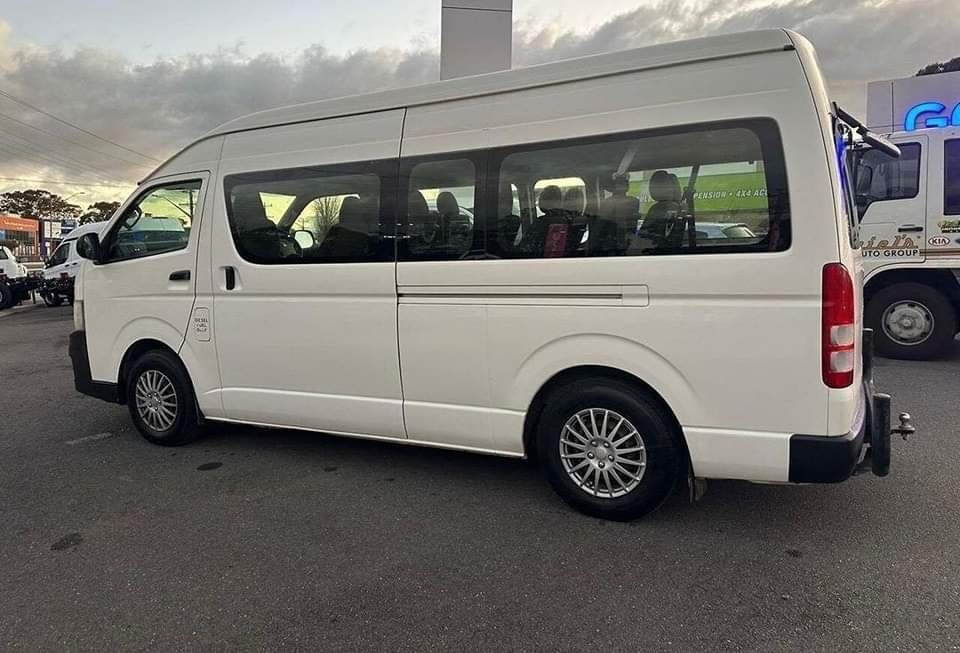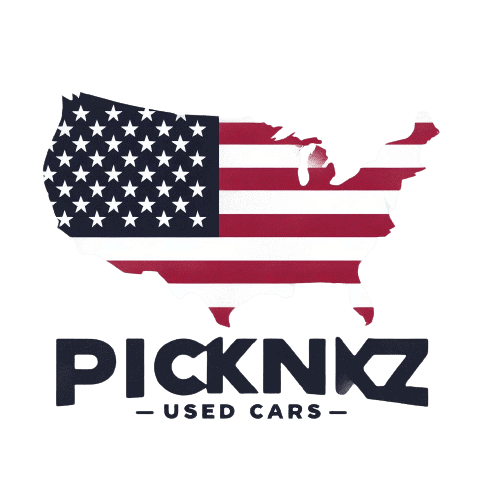Pickinz Used Cars: Toyota Hiace 2010 Review
Introduction to the Toyota Hiace
The Toyota Hiace has long been a staple in the world of commercial vehicles, known for its reliability, spaciousness, and versatility. The 2010 model year continues this tradition, offering a blend of practicality and comfort that appeals to both businesses and families alike. Whether you are looking for a dependable workhorse or a family transporter, the Toyota Hiace 2010 stands out as an excellent choice.
Design and Dimensions
The Toyota Hiace 2010 features a robust design that is both functional and aesthetically pleasing. Its dimensions are impressive, with an overall length of approximately 5,380 mm (211.4 inches), width of about 1,880 mm (74.2 inches), and height around 2,280 mm (89.8 inches). This generous size allows for ample interior space, making it ideal for transporting goods or passengers.
The exterior design is characterized by its boxy shape which maximizes cargo capacity while providing good visibility for the driver. The front fascia is equipped with large headlights and a prominent grille that gives it a commanding presence on the road. The sliding side doors enhance accessibility, especially in tight parking situations.
Interior Comfort and Features
Step inside the 2010 Hiace, and you will find an interior designed with practicality in mind. The cabin is spacious enough to accommodate up to 12 passengers depending on the configuration chosen. The seats are designed for comfort during long journeys, with ample legroom and headroom available.
In terms of features, the Hiace comes equipped with essential amenities such as air conditioning, power windows, and an audio system that includes CD player functionality. Higher trims may offer additional features like Bluetooth connectivity and upgraded sound systems.
The dashboard layout is straightforward and user-friendly, ensuring that drivers can easily access controls without distraction. Storage compartments throughout the cabin provide convenient spaces for personal items or work-related materials.
Performance and Handling
Under the hood, the Toyota Hiace 2010 offers a range of engine options tailored to meet various needs. The most common engine found in this model is a 3.0-liter turbocharged diesel engine that produces approximately 171 horsepower (127 kW) and delivers robust torque for heavy loads.
This engine is paired with either a five-speed manual or four-speed automatic transmission, providing smooth gear shifts whether you’re navigating city streets or cruising on highways. The fuel efficiency of this model is commendable for its class; it averages around 10-12 km/l (23-28 mpg), making it economical for both personal use and business operations.
Handling characteristics are also noteworthy; despite its size, the Hiace offers responsive steering and stability during cornering thanks to its well-tuned suspension system. This makes it easier to maneuver in urban environments where tight turns are often required.
Safety Features
Safety is paramount in any vehicle purchase decision, especially when it comes to transporting passengers or valuable cargo. The Toyota Hiace 2010 incorporates several safety features designed to protect occupants:
- Airbags: Front airbags are standard across most models.
- Anti-lock Braking System (ABS): Helps prevent wheel lock-up during sudden braking.
- Electronic Brake-force Distribution (EBD): Ensures optimal brake force distribution among all wheels.
- Child Safety Locks: Essential for families traveling with young children.
These features contribute to a solid safety rating within its class, giving peace of mind to drivers who prioritize safety alongside performance.
Versatility in Use
One of the standout attributes of the Toyota Hiace is its versatility. It can be configured as a passenger van or cargo carrier depending on your needs:
- Passenger Transport: Ideal for shuttle services or large family outings.
- Cargo Van: With rear seats removed or folded down, it transforms into an efficient cargo carrier capable of handling significant loads.
- Custom Conversions: Many owners opt for custom modifications such as camper conversions due to its spacious interior.
This adaptability makes the Hiace popular among various sectors including tourism operators, delivery services, and even families seeking extra space.
Reliability and Maintenance
Toyota’s reputation for reliability extends firmly into the realm of used vehicles like the 2010 Hiace. Owners often report minimal issues over time when properly maintained; routine servicing can keep this vehicle running smoothly well beyond high mileage thresholds.
Parts availability is another advantage; being one of Toyota’s flagship models means that replacement parts are widely accessible at reasonable prices—making maintenance straightforward without excessive costs involved.
Conclusion: Is the Toyota Hiace 2010 Right For You?
In summary, if you’re considering purchasing a used vehicle that combines reliability with versatility—the Toyota Hiace 2010 should undoubtedly be on your shortlist. Its spacious interior caters well to both passenger transport needs as well as cargo requirements while maintaining strong performance metrics across various driving conditions.
With competitive fuel efficiency figures paired with robust safety features—this model not only meets but exceeds expectations set forth by many competitors within its segment.
Whether you’re operating a business requiring dependable transportation solutions or simply need more room for family adventures—the Toyota Hiace remains an enduring choice worth considering at Pickinz Used Cars!

Comparison of the 2010 Toyota Hiace vs. Hyundai H1
Pickinz Used Cars: A Comprehensive Comparison of the Toyota Hiace 2010 vs. Hyundai H1
When it comes to choosing a reliable and spacious vehicle for both personal and commercial use, the Toyota Hiace 2010 and the Hyundai H1 stand out as two of the most popular options in the used car market. Each model has its own unique features, advantages, and considerations that can significantly impact your decision. In this detailed comparison, we will explore various aspects of both vehicles, including performance, interior space, safety features, fuel efficiency, maintenance costs, and overall value for money.
Performance Overview
The performance of a vehicle is often one of the primary factors influencing a buyer’s decision. The Toyota Hiace 2010 is equipped with a robust 3.0-liter turbocharged diesel engine that delivers impressive torque and power. This engine produces around 130 horsepower and offers excellent towing capacity, making it ideal for transporting goods or large groups of people. The Hiace is known for its reliability and durability on the road, which is crucial for businesses that rely on their vehicles for daily operations.
On the other hand, the Hyundai H1 features a slightly smaller 2.5-liter turbocharged diesel engine that generates approximately 125 horsepower. While it may not match the Toyota Hiace 2010 in terms of raw power, the H1 compensates with a smooth driving experience and responsive handling. Both vehicles come with manual transmission options; however, many buyers prefer automatic transmissions for ease of use in urban environments.
Interior Space and Comfort
One of the standout features of both the Toyota Hiace 2010 and Hyundai H1 is their spacious interiors. The Hiace is designed primarily as a commercial vehicle but offers ample room for passengers when configured as a people mover. It can comfortably seat up to 12 passengers depending on the configuration chosen. The interior layout is practical with easy-to-clean surfaces—ideal for businesses that require frequent cleaning.
Conversely, the Hyundai H1 also provides generous seating capacity (up to 8 passengers) but places more emphasis on passenger comfort compared to the Toyota Hiace 2010. The H1 boasts plush seating materials and additional amenities such as climate control systems that enhance passenger comfort during longer journeys. Additionally, it features more modern design elements in its dashboard layout compared to the utilitarian approach seen in the Hiace.
Safety Features
Safety is paramount when selecting any vehicle; thus it’s essential to compare how each model fares in this regard. The Toyota Hiace 2010 comes equipped with standard safety features such as anti-lock brakes (ABS), electronic brake-force distribution (EBD), and dual front airbags. However, some users have noted that while these features are adequate for basic safety needs, they may lack advanced driver-assistance technologies found in newer models.
In contrast, the Hyundai H1 includes similar safety features but often goes a step further by incorporating additional elements like side airbags and stability control systems in certain variants. This focus on safety makes it an appealing choice for families or businesses prioritizing passenger protection.
Fuel Efficiency
Fuel efficiency plays a crucial role in determining long-term ownership costs for any vehicle type—especially those used frequently like vans or people movers. The Toyota Hiace typically achieves around 10-12 km/l (kilometers per liter) under normal driving conditions due to its larger engine size; however, this can vary based on load conditions and driving habits.
The Hyundai H1 offers slightly better fuel economy at approximately 11-13 km/l thanks to its smaller engine displacement combined with efficient engineering practices employed by Hyundai over recent years. For businesses looking to minimize operational costs associated with fuel consumption over time without sacrificing performance capabilities entirely—the H1 may present itself as an attractive option.
Maintenance Costs
When considering used cars like these two models from reputable manufacturers such as Toyota & Hyundai—maintenance costs become critical factors influencing ownership experiences down-the-line after purchase decisions are made initially based upon performance metrics alone!
Toyota has built an enduring reputation around reliability which translates into lower average annual repair bills compared against competitors within similar segments across various markets globally! Parts availability remains high due largely because many dealerships stock genuine OEM components readily available whenever needed!
Hyundai has also improved significantly regarding reliability over recent decades; however—historically speaking—their vehicles tend towards slightly higher repair frequencies than Toyotas do! Nevertheless—many owners report satisfaction levels remaining high due largely because warranty coverage offered by manufacturers often exceeds expectations set forth initially!
Overall Value Proposition
Ultimately deciding between these two models boils down not just performance metrics alone but rather how well they align with individual needs/preferences! For example: If you prioritize raw power coupled alongside ruggedness then look no further than choosing a used Toyota Hiace! Conversely—if comfort & style matter more than outright strength then consider opting instead towards purchasing an older yet still capable Hyundai H1 instead!
Both vehicles represent solid choices within their respective categories offering distinct advantages depending upon what buyers seek most from their next automotive investment!
In conclusion—the decision between purchasing either model should reflect personal priorities surrounding usage scenarios intended post-purchase along with budgetary constraints faced currently too!

